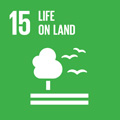- Docente: Marta Galloni
- Credits: 6
- SSD: BIO/02
- Language: English
- Teaching Mode: Blended Learning
- Campus: Bologna
- Corso: Second cycle degree programme (LM) in Sciences and Management of Nature (cod. 9257)
-
from Oct 01, 2024 to Jun 13, 2025
Learning outcomes
The aim of the course is to provide students with a general overview of the policies, programs and conservation strategies of plant biodiversity, specifically of rare and endangered plants, and to give competences in plant conservation biology, from a species-based approach and in a global change scenario. At the end of the course the student will gain a thorough understanding of the priorities and methods used in plant conservation. In particular, the student is able to carry out demographic surveys in the field and acquire information on plant intraspecific diversity; identify threat factors for the survival of wild plant populations; set up appropriate management /concrete intervention actions.
Course contents
Distribution of global diversity, major threat factors. Policies and strategies for the conservation of plant diversity (Global strategy for plant conservation: objectives and progresses; EU and national strategies)
Spermatophytes' life cycle, critical bottlenecks identification and assessment. Reproductive biology of flowering plants. Plant pollination and plant-pollinator interactions. Dissemination. Intraspecific variability. Plant rarity, population fragmentation and isolation. Demographic analysis of wild plant populations.
Threats in a global change scenario, risk assessment and conservation priorities. IUCN categories and criteria.
In-situ conservation: examples and visits to project sites (in Emilia-Romagna). Ex-situ conservation: theory and practice.
Setting up an experimental research protocol aimed at collecting data for the writing of a scientific article.
Educational field trips and specific practical workshops and surveys in the field are planned.
Readings/Bibliography
Bibliographic material (mainly research papers and technical manuals dealing with course topics) will be distributed during the course.
On-line distribution of didactic material, available at Virtuale (Virtual Learning Environment) - UniBo
Specific topics can be deepened by consulting the following textbooks:
- Frankel, Brown, Burdon "The Conservation of Plant Biodiversity", Cambridge University Press
- Judd, Campbell, Donogue "Systematic Botany - A phylogenetic Approach" 2nd edition
Teaching methods
Lessons and seminars
Practical workshops (indoor and outdoor)
Field trips and didactic excursions
In consideration of the types of activities and teaching methods adopted, the attendance of this training activity requires the performance of all students of Modules 1 and 2 in e-learning mode and the participation in Module 3 of specific training on safety and health in study areas. Information on dates and methods of attendance for Module 3 can be consulted in the specific section of the degree program website.
Assessment methods
- Theoretical part ( 3 open questions) written at first examination session, oral at the following sessions
- Oral discussion on the original short scientific paper (group work, output of lab activity)
Final evaluation= mean of the 2 grades
Teaching tools
Power-Point presentations
Botanic garden collections
Equipment for laboratory and field surveys
Group work presentations
Innovative teaching methods and tools (Wooclap, Kahoot, gamification)
Office hours
See the website of Marta Galloni
SDGs




This teaching activity contributes to the achievement of the Sustainable Development Goals of the UN 2030 Agenda.
